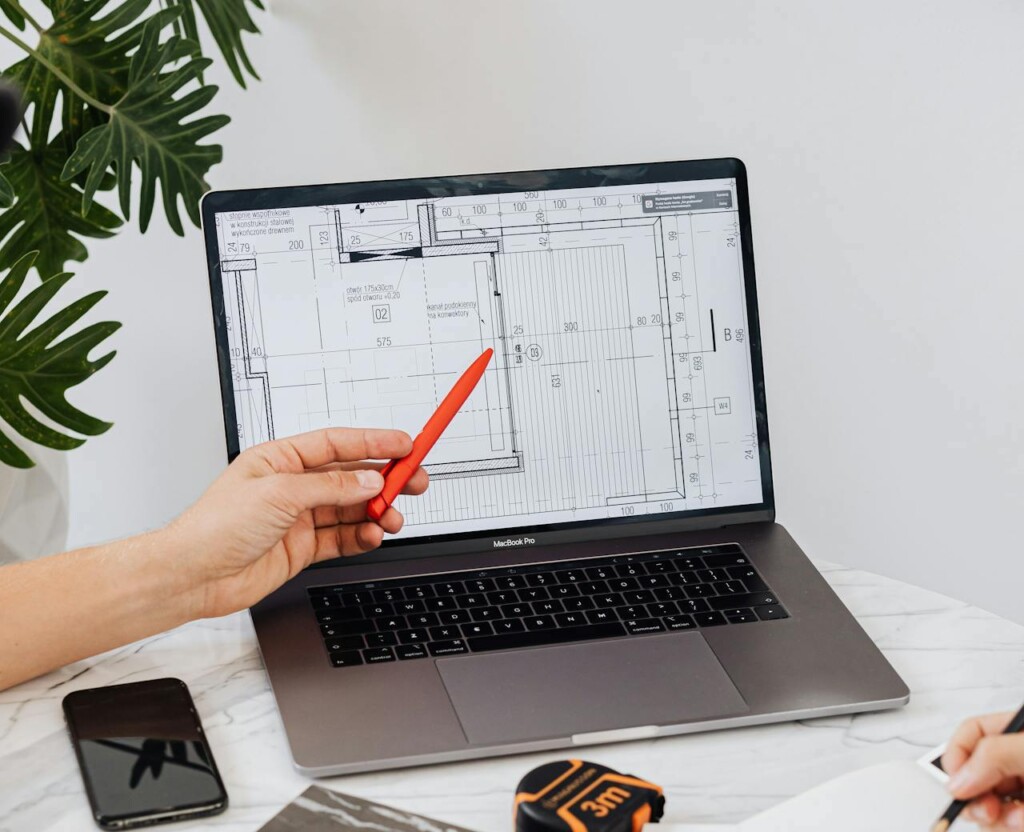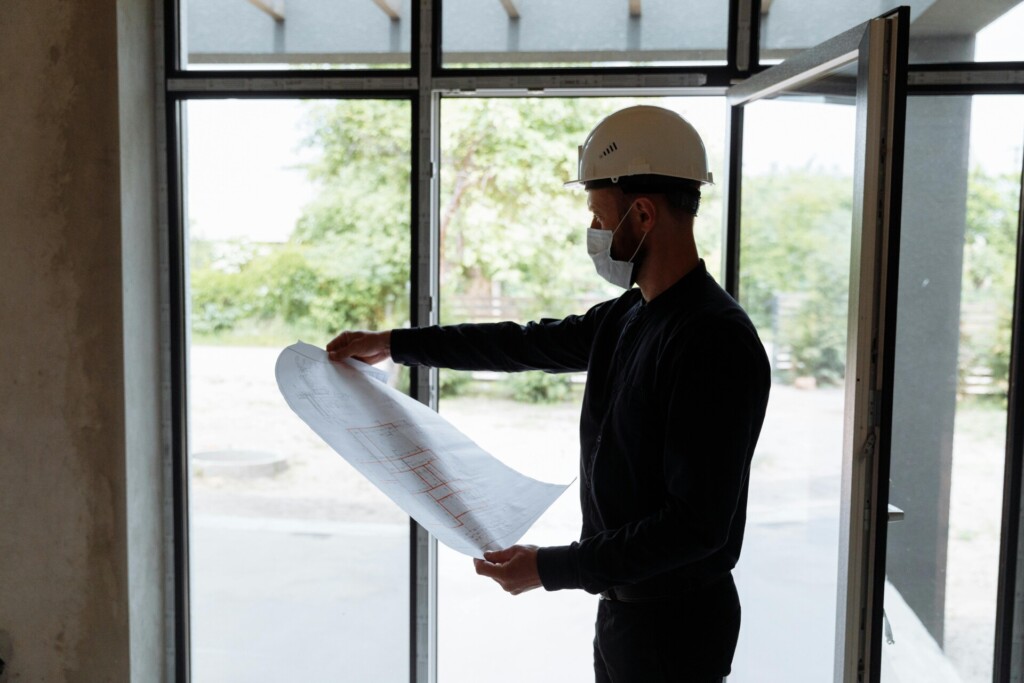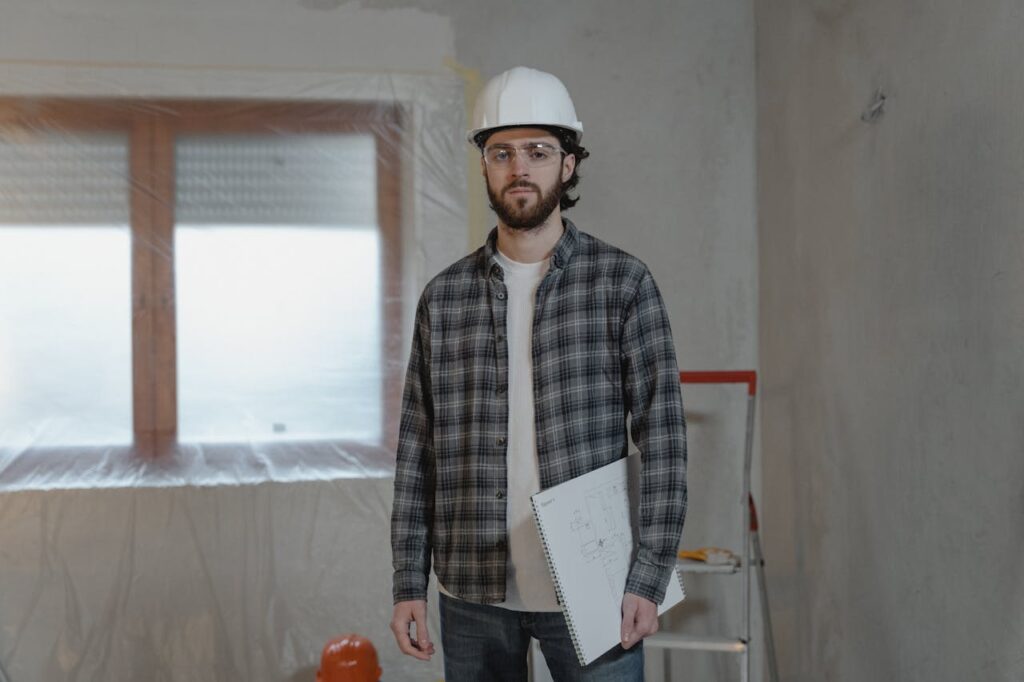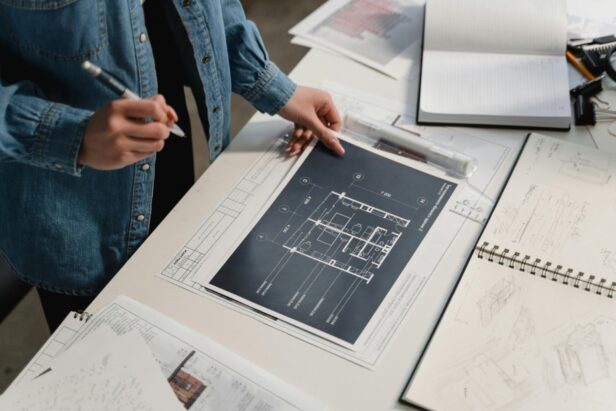Commercial construction today requires more than just hammering nails and pouring concrete. Contractors design services bridge the critical gap between architectural vision and completed structures, providing property owners with comprehensive oversight from initial concept through final occupancy.
These services encompass design management, feasibility studies, professional selection, and regulatory compliance spanning the entire project lifecycle. Design-build delivery offers an integrated approach under one contract, streamlining accountability and enhancing project outcomes through collaborative teamwork.
How Do Design Services Map Across The Project Lifecycle?

Design services align with distinct project phases, each requiring specific activities and deliverables. We coordinate these services to maintain project momentum while ensuring quality and compliance throughout the construction process.
Pre-Design Phase: We begin with feasibility studies that assess site conditions, zoning requirements, and construction feasibility. Programming follows, where we define space requirements, functional relationships, and performance criteria. These early activities establish the foundation for all subsequent design and construction decisions.
Design Phase: Site design guidance shapes building placement, circulation patterns, and utility connections. We select design professionals based on project requirements and coordinate their efforts throughout the design process. Cost estimating occurs continuously, providing budget validation at each design milestone.
Quality control extends to landscape architectural review and interior design services. We evaluate design proposals against functional requirements, aesthetic standards, and constructability concerns. This oversight ensures design solutions support both operational needs and construction efficiency.
Compliance Activities: Building code analysis runs parallel to design development, identifying requirements for structural systems, fire safety, and accessibility. ADA access reviews verify compliance with accessibility standards at multiple project stages. CEQA compliance addresses environmental impacts where applicable, coordinating with regulatory agencies throughout the approval process.
Pre-Construction Phase: Project bidding involves preparing bid documents, managing the bidding process, and evaluating contractor proposals. We support contract award decisions by analyzing pricing, schedule commitments, and contractor qualifications. This phase establishes the construction team and finalizes project delivery methods.
Construction Phase: Work coordination becomes our primary focus as we manage the intersection between design intent and field reality. Contract administration includes processing submittals, reviewing change orders, and maintaining communication between design teams and construction crews. Budget and schedule management requires continuous monitoring of project performance against established baselines.
Post-Construction Phase: Building inspections verify compliance with design documents and building codes. Project closeout involves completing punch list items, processing final payments, and transferring project documentation to owners. Warranty coordination establishes procedures for addressing construction defects and system performance issues during the warranty period.
Continuous Support: LEED support and energy policy guidance inform decisions throughout the project lifecycle. These services help optimize building performance while meeting sustainability goals and regulatory requirements. We integrate these considerations into design reviews, construction oversight, and commissioning activities.
What Is Design-Build And Why Use It For Contractors Design Services?
Design-build combines both design and construction under a single contract rather than splitting these phases across separate agreements. This project delivery method creates a unified team where architects, engineers, and contractors collaborate from project start to completion.
The approach transforms how we execute construction projects. Instead of the traditional sequence where design must finish before construction begins, design-build allows these phases to overlap and inform each other throughout the project lifecycle.
Faster Project Delivery Through Team Integration
Design-build accelerates project timelines by eliminating the gap between design completion and construction start. We coordinate design decisions with construction realities in real time, reducing delays that typically occur when construction teams encounter design conflicts.
Research from the Design-Build Institute of America shows that design-build projects consistently deliver faster completion times compared to traditional delivery methods. The collaborative workflow means construction planning begins during early design phases, allowing us to order materials and coordinate trades before drawings reach final approval.
This integration prevents the common scenario where contractors discover constructability issues only after design completion. When design and construction teams work as one entity, we resolve potential conflicts before they impact the schedule.
Higher Quality Outcomes Through Early Collaboration
The single-contract structure creates accountability that drives quality improvements across all project phases. Design decisions consider construction methods, material availability, and site conditions from the beginning rather than addressing these factors as afterthoughts.
We bring construction expertise into design discussions early, ensuring that aesthetic goals align with practical building methods. This early input helps avoid design elements that look impressive on paper but create unnecessary complexity or cost during construction.
Quality control becomes more effective when the same team responsible for design also handles construction. There are no finger-pointing scenarios between separate design and construction contracts when issues arise.
Risk Allocation And Cost Certainty
Design-build assigns risks to the parties best equipped to manage them. Design risks, construction risks, and coordination risks all fall under our single contract, eliminating disputes about responsibility when challenges emerge.
Owners gain earlier knowledge of firm costs because we develop pricing alongside design development. This transparency allows for informed decisions about scope and budget adjustments before construction begins, rather than discovering cost impacts through change orders later.
The approach reduces claims and litigation compared to traditional delivery methods. When design and construction operate under one contract, internal coordination issues become our responsibility to resolve rather than grounds for disputes between separate contractors.
Innovation Through Creative Problem Solving
The collaborative structure encourages innovation because design and construction teams share common goals rather than protecting separate interests. We can propose alternative materials, construction methods, or design approaches that improve performance while controlling costs.
Design-build projects benefit from the construction team’s practical knowledge during design development. This input often leads to solutions that traditional design-bid-build projects miss, such as material substitutions that reduce cost without compromising quality or construction sequences that accelerate completion.
Trust and mutual respect become essential elements of the process. The shared accountability creates incentives for all team members to contribute their best ideas and work toward optimal project outcomes rather than simply fulfilling minimum contract requirements.
Which Procurement Approaches Fit Design-Build Services?

Two main procurement methods work for design-build projects. Each follows a different path to team selection and contract price development. We help owners choose the approach that matches their project goals and organizational capacity.
Two-Step Best Value Design-Build
This method starts with qualifications screening. We first shortlist the three most qualified design-build teams based on their experience and capabilities. Teams submit statements of qualifications that show their track record on similar projects.
Phase two shifts to competitive proposals. Shortlisted teams prepare design concepts and pricing proposals within the project budget. They present technical approaches that demonstrate how they will solve project challenges while meeting schedule and cost targets.
Owner selection considers multiple factors. Teams are evaluated on design quality, project approach, and contract price. The best value proposal wins, not necessarily the lowest price. This creates competition on both design innovation and cost efficiency.
Progressive Design-Build
Team selection happens early without final pricing. We help owners choose design-builders based primarily on qualifications and project understanding. The selection process moves faster because teams do not need to develop detailed proposals upfront.
Design and pricing develop together through collaboration. The selected team works with the owner to advance the design from concept through detailed development. Cost models become more precise as design details emerge and project scope solidifies.
Contract price comes later in the process. Teams agree on the final guaranteed maximum price only after design reaches 60 to 70 percent completion. This approach reduces risk for both parties because unknowns are resolved before price commitment.
Choosing The Right Procurement Path
Project complexity often drives the decision. Two-Step Best Value works well when scope is clearly defined and the owner can specify requirements upfront. Progressive Design-Build suits projects with evolving needs or technical complexity that requires early contractor input.
Owner capacity matters for successful execution. Two-Step Best Value requires strong project definition skills and the ability to evaluate technical proposals. Progressive Design-Build demands active owner participation throughout design development and collaborative decision making.
[[artifact_table]] Comparison of Two-Step Best Value vs Progressive Design-Build procurement approaches [[/artifact_table]]
Both methods can deliver successful outcomes when matched to the right project conditions. We work with owners to assess their specific needs, internal capabilities, and project characteristics before recommending the most suitable procurement approach.
What Compliance, Safety, And Sustainability Reviews Should Be Built In?
Construction compliance requires systematic integration of multiple review types across project phases. We organize these checks into three core areas that align with construction milestones and regulatory requirements.
Code Compliance And Life Safety Reviews
Building code analysis begins during design development and continues through construction administration. We verify structural systems, fire ratings, and egress paths against local amendments to model codes. Life-safety requirements demand particular attention to fire separation assemblies, sprinkler coverage, and emergency lighting systems.
Code officials expect detailed documentation during plan review and construction inspections. We coordinate with authorities having jurisdiction to clarify interpretation questions before they impact the construction schedule. Regular code updates require ongoing review of project specifications against current requirements.
Foundation, framing, electrical, and mechanical inspections follow established sequences tied to construction phases. We schedule these reviews to prevent work stoppages while maintaining code compliance throughout the build process.
Accessibility And Environmental Compliance
ADA compliance verification covers site accessibility, interior circulation, and fixture placement. We review accessible routes from parking areas through building entries and verify clear floor spaces at fixtures. Door hardware, grab bar backing, and toilet compartment dimensions require field verification during rough construction phases.
The California Commission on Disability Access provides detailed checklists that guide inspection of accessibility features during construction phases. These reviews must account for finish material thicknesses when verifying critical dimensions.
CEQA compliance applies to projects requiring environmental impact assessment under California law. We coordinate environmental mitigation measures with construction activities and verify implementation of required monitoring programs. Cultural resource protection and biological surveys may require specialized consultants during site preparation phases.
Green Building And Quality Control Integration
LEED support requires certified professionals to guide material selection, energy modeling, and commissioning processes. We integrate green building requirements into construction document review and coordinate prerequisite verification with third-party commissioning agents. Energy policy compliance often overlaps with building code requirements for insulation and equipment efficiency.
Landscape architectural design review ensures site development meets aesthetic and functional requirements while supporting stormwater management goals. We verify plant installation timing, irrigation system performance, and hardscape material compliance with project specifications.
Quality control procedures tie compliance reviews to construction milestones. We establish inspection schedules that align with trade sequencing and maintain documentation systems that support warranty coordination. Building inspections progress from rough phases through final approvals, with punch list management bridging substantial completion and project closeout.
Project closeout requires comprehensive review of all compliance documentation, including warranties, operation manuals, and as-built drawings. We coordinate final inspections with code officials and verify correction of all outstanding issues before releasing final payments to trade contractors.
Conclusion And Next Steps

Contractors design services unite planning, design, and construction into one coordinated process. We manage design consultants, handle compliance requirements, oversee procurement approaches, and execute field operations from concept through warranty. This integrated approach creates clear accountability and streamlined project lifecycle mapping.
Design-build delivery offers particular advantages for project teams seeking single-contract solutions. The method improves risk allocation by assigning responsibilities to parties best equipped to manage them. It accelerates delivery schedules while maintaining quality control through collaborative team integration. Cost certainty emerges earlier in the process, giving owners better financial predictability.
Moving forward with your project requires four key decisions. Define the specific lifecycle tasks your project needs, from feasibility studies through warranty coordination. Choose the delivery method that matches your risk tolerance and timeline requirements. Establish procurement criteria that balance qualifications with cost considerations. Finally, align building code compliance, ADA accessibility reviews, CEQA requirements, LEED certification goals, inspection schedules, project closeout procedures, and warranty response protocols with your construction timeline.
Ready to implement contractors design services for your development project? Contact EB3 Construction to discuss your project lifecycle mapping and delivery approach.




